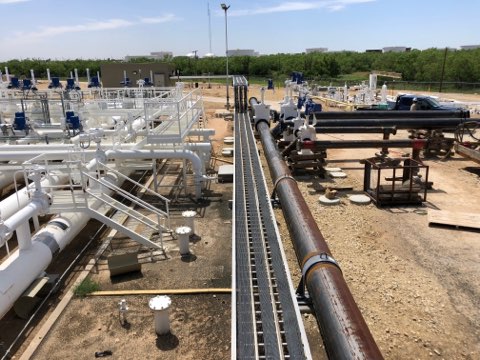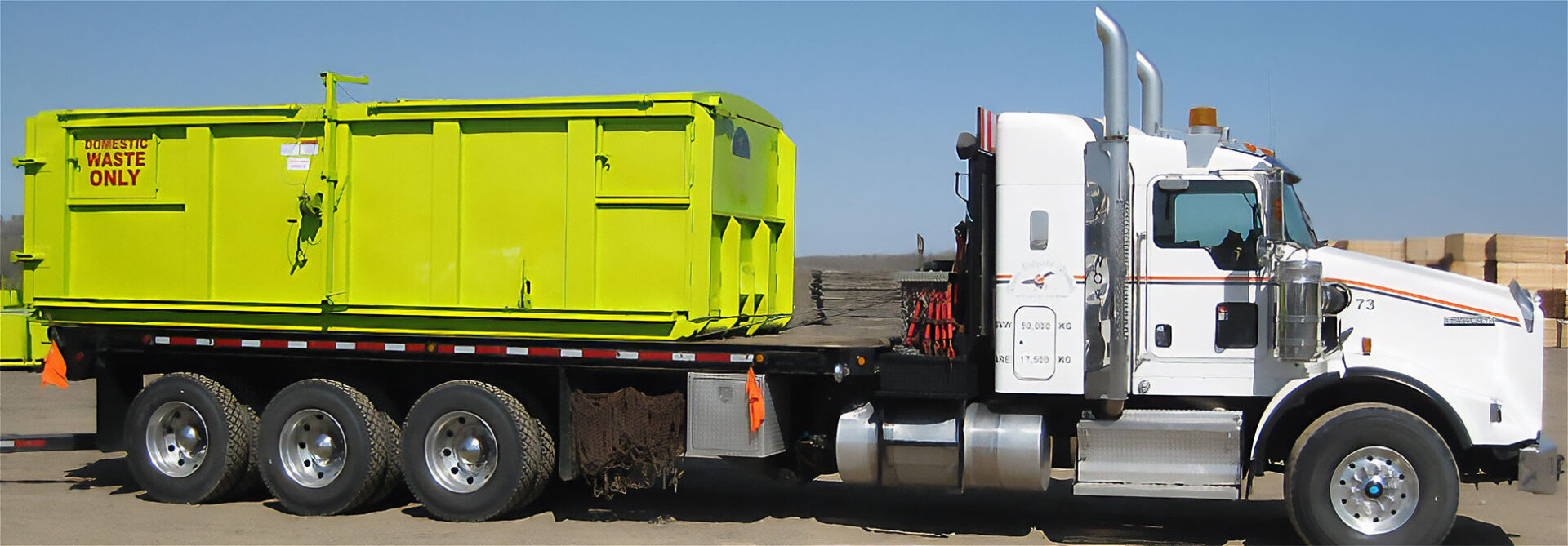A Comprehensive Guide to the Various Kinds of Oil Field Equipment and Pipeline Equipment Available
The oil and gas industry depends greatly on specialized equipment for effective extraction and transportation. Numerous types of machinery, from drilling rigs to tank, play essential roles in this intricate procedure. Each tool serves distinct features that add to overall functional success. Recognizing these components is important for anyone associated with the field. As the market advances, so also do the modern technologies that sustain it. What advancements are on the perspective?

Drilling Rigs: The Backbone of Oil Exploration
Drilling rigs act as the crucial machinery in the domain name of oil exploration, enabling companies to accessibility hydrocarbon gets buried deep underneath the Earth's surface. These rigs can be found in numerous types, consisting of land rigs, offshore rigs, and mobile units, each made to operate in specific environments. Equipped with innovative innovation, drilling rigs can permeate geological formations with accuracy, making sure efficient source removal. The structural stability and operational capacities of these rigs are essential, as they need to hold up against severe problems and significant pressures. The choice of an exploration rig affects the overall task cost and timeline, making it a vital consideration for oil companies seeking to maximize their exploration efforts and make the most of performance in their procedures.
Pumps: Crucial for Fluid Motion
In the oil extraction process, the function of pumps is considerable, assisting in the movement of fluids throughout various stages of production. Pumps are necessary for transporting petroleum, water, and various other liquids from below ground storage tanks to the surface area and then via pipes to refineries. They can be found in various kinds, including centrifugal, positive displacement, and completely submersible pumps, each serving particular functions based on the liquid features and functional demands. Centrifugal pumps are generally used for their effectiveness in high-flow applications, while favorable displacement pumps master taking care of viscous fluids. The option of pump impacts total efficiency, operational security, and maintenance prices. Correct selection and upkeep of pumps are vital for optimizing manufacturing and reducing downtime in oil field operations.
Shutoffs: Controlling Circulation and Pressure

Shutoffs play a crucial role in taking care of the flow and pressure of liquids within oil areas and pipelines. Different kinds of valves offer unique applications, each developed to accomplish specific features essential for reliable operation - Superior Oilfield pipeline equipment rentals. Recognizing the characteristics and uses these shutoffs is necessary for enhancing system efficiency and safety
Kinds of Valves
Crucial components in oil field operations, shutoffs play an essential function in regulating the circulation and stress of fluids within pipelines and devices. Different kinds of shutoffs are utilized to meet the diverse requirements of oil and gas manufacturing. Usual types consist of gateway shutoffs, which provide a straight-line flow and marginal stress decline; world valves, understood for their strangling capacities; and round shutoffs, identified for their quick on/off control. Additionally, check shutoffs avoid heartburn, while butterfly valves use a light-weight remedy for managing circulation. Each shutoff kind is made with details products and arrangements to hold up against the harsh problems often found in oil fields, ensuring reliability and performance in operations. Understanding these kinds is critical for reliable system monitoring.
Valve Applications and Features
While different kinds of valves serve distinct objectives, their key applications focus on managing flow and stress within oil and gas systems. Shutoffs such as entrance, globe, and round shutoffs control fluid activity, making certain peak efficiency and safety. Gateway shutoffs are frequently used for on/off control, providing marginal circulation resistance. Globe shutoffs, on the other hand, offer specific flow regulation, making them ideal for strangling applications. Ball shutoffs are favored for their fast operation and tight securing capabilities. Additionally, stress safety valve are vital for preventing system overpressure, guarding devices integrity. Generally, the suitable option and application of valves boost operational performance, making sure the dependable transportation of oil and gas through pipes and processing facilities.
Compressors: Enhancing Gas Transportation
Compressors play a critical role in the reliable transport of all-natural gas, ensuring that it moves efficiently through pipes over fars away. These tools increase the pressure of gas, permitting it to conquer friction and elevation adjustments within the pipeline system. Additionally, compressors assist in the harmonizing of supply and demand, fitting variations in consumption and manufacturing prices. Various types of compressors are utilized in the sector, including centrifugal, reciprocating, and rotary screw compressors, each offering unique benefits based upon the operational demands. Routine upkeep of these compressors is necessary to make the most of effectiveness and decrease downtime, ultimately adding to a trustworthy gas transport network. Their crucial function highlights the value of compressors in the total oil and gas framework.
Storage Tanks: Safe and Reliable Fluid Management
Effective transport of gas depends on different supporting systems, one of which is the appropriate administration of storage tanks. These storage tanks play a vital function in safely consisting of fluids, guaranteeing that operational effectiveness is maintained while reducing environmental risks. Created from sturdy products, they are made to hold up against high stress and destructive aspects. Correctly sized and strategically located, tank assist in the smooth flow of gas and various other liquids, stopping bottlenecks in supply chains. Regular upkeep and surveillance are critical to identify leakages or structural issues, advertising security and compliance with governing criteria. Eventually, the effective monitoring of tank is essential for the general integrity and integrity of the oil and gas market's fluid handling systems.
Pipeline Equipments: Facilities for Transportation
Pipeline systems offer as the backbone of the oil and gas sector, assisting in the effective transportation of hydrocarbons over huge distances. These systems are composed of different components, consisting of pipes, shutoffs, pumps, and compressors, all thoroughly advice designed to assure home seamless circulation. The materials used in pipeline building, frequently steel or high-density polyethylene, are picked for longevity and resistance to rust. Pipeline networks can span throughout land and water, attaching production websites to refineries and warehouse. In addition, advanced innovation enables real-time tracking of circulation rates and stress levels, enhancing operational performance. The critical placement of these pipelines decreases ecological impact while making best use of source availability, thereby playing an important duty in conference energy demands internationally.
Safety And Security Equipment: Making Certain Employee and Environmental Management
The procedure of pipeline systems, while necessary for power transportation, also presents substantial safety and security difficulties for workers and the atmosphere. Security tools plays a substantial role in reducing these dangers. Personal protective devices (PPE) such as safety helmets, handwear covers, and non-slip shoes safeguards employees from physical hazards. Additionally, gas detection systems keep replacing water pipes in house track of for leaks, guaranteeing that dangerous materials do not posture a threat to personnel or the surrounding ecosystem. Emergency closure systems are important for rapidly halting operations throughout a situation, protecting against possible calamities. Spill control materials, including absorbents and obstacles, are basic for lessening ecological effect. In general, investing in comprehensive safety and security devices is important for preserving operational honesty and shielding both employees and the atmosphere in the oil and gas sector.

Regularly Asked Concerns
Just how Do I Choose the Right Oil Field Equipment for My Job?
Picking the ideal oil area equipment includes reviewing project specifications, budget plan restraints, and operational demands. Take into consideration elements such as tools reliability, compatibility with existing systems, and the vendor's reputation to guarantee peak performance and safety and security.
What Are the Maintenance Requirements for Oil Field Equipment?
Maintenance demands for oil field tools consist of routine examinations, lubrication, and timely fixings. Operators should likewise stick to manufacturer guidelines, monitor performance metrics, and assurance conformity with safety policies to improve durability and effectiveness.

Just How Can I Make Sure Compliance With Environmental Regulations?
To assure conformity with environmental regulations, companies must conduct regular audits, implement ideal techniques, purchase training, keep correct paperwork, and stay upgraded on regulation (Superior Oilfield Rentals Texas). Collaboration with ecological firms can also boost adherence to policies
What Is the Ordinary Lifespan of Pipeline Equipment?
The ordinary life expectancy of pipeline tools generally varies from 20 to 50 years, relying on aspects such as material top quality, ecological conditions, and upkeep methods. Regular assessments can considerably influence long life and operational efficiency.
Exactly how Do I Securely Deliver Oil Field Equipment to Remote Locations?
Transferring oil field tools to remote locations requires careful preparation, including course assessment, protecting authorizations, making use of appropriate lorries, and guaranteeing safety and security methods are complied with. Appropriate training and interaction amongst teams are crucial for effective transport.